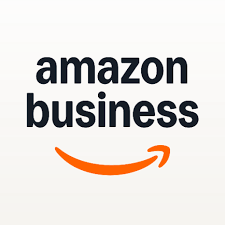Amazon: Comprehensive Analysis of the Global E-Commerce Powerhouse
Amazon is a multinational technology corporation that began as an online bookstore in 1994. Founded by Jeff Bezos in Seattle, Washington, the company evolved into a global leader in e-commerce, cloud computing, digital entertainment, and logistics. Amazon operates across North America, Europe, Asia-Pacific, and the Middle East, serving millions of consumers and businesses daily.

Origins and Early Development:
Founding Vision:
Jeff Bezos launched Amazon with the mission of creating the “everything store.” The company started by selling books online, capitalizing on the growing internet adoption of the mid-1990s.
IPO and Initial Growth:
Amazon went public in 1997 with the ticker symbol AMZN. The IPO raised $54 million, giving the company resources to expand into new categories, including electronics, toys, and home goods.
Core Business Segments of Amazon:
E-Commerce Marketplace:
Amazon operates a dual model: direct retail and third-party seller marketplace. Millions of sellers list products on Amazon’s platform, supported by Fulfillment by Amazon (FBA). This service provides warehousing, packaging, and last-mile delivery.
Amazon Web Services (AWS):
AWS, launched in 2006, delivers cloud infrastructure to businesses and governments worldwide. It offers storage, databases, artificial intelligence, and serverless computing. Clients include Netflix, NASA, and Fortune 500 companies.
Amazon Prime Membership:
Prime is a subscription program offering free shipping, video streaming, and exclusive deals. With over 200 million members worldwide, it anchors customer loyalty and repeat purchases.
Amazon Devices and Alexa:
Amazon designs consumer hardware, including Kindle e-readers, Fire TV sticks, and Echo smart speakers. Alexa, Amazon’s voice assistant, integrates artificial intelligence into daily life through home automation and voice commands.
Entertainment and Media:
Amazon Studios produces original content for Prime Video. The acquisition of MGM in 2022 expanded Amazon’s media library with iconic franchises like James Bond and Rocky. Twitch, another Amazon subsidiary, dominates global game streaming.
Amazon’s Global Market Reach:
North America:
Amazon leads online retail in the United States, Canada, and Mexico. Its logistics network includes fulfillment centers, air hubs, and last-mile delivery stations.
Europe:
Amazon operates marketplaces in the United Kingdom, Germany, France, Italy, Spain, and the Netherlands. Germany is the largest European market outside the U.S.
Asia-Pacific:
Amazon has a strong presence in Japan and India. In India, Amazon invests billions to compete with Flipkart and Reliance Retail. Australia and Singapore serve as additional hubs.
Middle East and South America:
Amazon entered the Middle East through Souq.com acquisition. In South America, Brazil represents the largest marketplace, though competition with Mercado Libre is intense.
Financial Strength and Revenue Streams:
Amazon consistently ranks among the top global corporations by revenue.
-
Revenue in 2022 exceeded $513 billion.
-
AWS contributes over 70% of operating income.
-
Advertising revenue surpassed $37 billion in 2022.
-
Subscription services, including Prime, generate steady recurring revenue.
Amazon reinvests earnings into logistics, research, and global expansion, fueling long-term growth.
Innovation and Technology Development:
Robotics and Automation:
Amazon integrates robotics in fulfillment centers, with Kiva robots streamlining warehouse operations. Automation reduces delivery times and labor costs.
Artificial Intelligence Applications:
AI powers product recommendations, fraud detection, and Alexa’s voice recognition. AWS offers machine learning solutions such as SageMaker and Rekognition.
Healthcare Expansion:
Through acquisitions like PillPack, Amazon entered the pharmaceutical sector. Amazon Pharmacy delivers prescription medications directly to customers.
Drone and Autonomous Delivery:
Amazon Prime Air tests drones for rapid parcel delivery. Scout, a sidewalk robot, explores autonomous logistics.
Amazon’s Workforce:
Amazon employs over 1.5 million workers globally. Roles span warehouse operations, software engineering, data science, and corporate management. The company invests in employee benefits but faces scrutiny over working conditions and unionization efforts.
Corporate Social Responsibility:
Amazon pursues environmental goals through “The Climate Pledge,” committing to net-zero carbon emissions by 2040. It invests in renewable energy, electric delivery vans, and sustainable packaging. Amazon also supports disaster relief and community development programs.
Competitive Landscape:
Amazon faces rivals in each domain:
-
Retail: Walmart, Alibaba, JD.com.
-
Cloud: Microsoft Azure, Google Cloud, Oracle.
-
Streaming: Netflix, Disney+, Apple TV+.
-
Logistics: FedEx, UPS, DHL.
Despite competition, Amazon’s scale and ecosystem integration give it a unique advantage.
Regulatory Challenges:
Global regulators scrutinize Amazon over antitrust concerns, tax practices, and labor policies. The European Union enforces competition laws. The U.S. Federal Trade Commission investigates market dominance. India restricts foreign investment in e-commerce to protect local retailers.
Future Prospects:
Amazon invests in artificial intelligence, healthcare, fintech, and global logistics to secure growth. Emerging markets in Africa and Southeast Asia present expansion opportunities. Cloud computing remains the most profitable segment, while e-commerce continues to anchor revenue.
Amazon Business Segments:
| Business Segment | Key Offerings | Subsidiaries / Products | Revenue Contribution |
|---|---|---|---|
| E-Commerce Marketplace | Online retail sales, third-party marketplace, fulfillment services | Amazon.com, FBA, Amazon Fresh | Largest revenue source |
| Amazon Web Services (AWS) | Cloud infrastructure, AI solutions, analytics, storage, and serverless computing | Amazon SageMaker, Rekognition, Lambda | Highest profit margin |
| Prime Membership | Subscription service with delivery, entertainment, music, and shopping benefits | Prime Video, Prime Music, Prime Reading | Recurring revenue |
| Consumer Devices | Hardware for reading, streaming, and smart homes | Kindle, Echo, Fire TV, Ring | Expanding hardware base |
| Entertainment & Media | Original films, streaming, and game broadcasting | Amazon Studios, MGM, Twitch, Audible | Growing market share |
| Advertising | Sponsored listings, display ads, programmatic campaigns | Amazon DSP, Sponsored Products | $37B+ annual revenue |
| Logistics & Supply Chain | Fulfillment centers, last-mile delivery, robotics, and autonomous systems | Amazon Logistics, Prime Air, Scout, Flex | Core infrastructure |
| Healthcare & Pharmacy | Online medical services, prescription delivery | Amazon Pharmacy, PillPack | Emerging growth segment |
FAQs on Amazon:
What is Amazon?
Amazon is a global technology corporation headquartered in Seattle, Washington. It operates in e-commerce, cloud computing, artificial intelligence, and digital entertainment.
Who founded Amazon and when?
Amazon was founded by Jeff Bezos on July 5, 1994, as an online bookstore in Bellevue, Washington.
What is Amazon Prime?
Amazon Prime is a paid membership program offering fast delivery, video streaming, music, cloud storage, and exclusive shopping deals to subscribers.
What is AWS in Amazon?
AWS (Amazon Web Services) is Amazon’s cloud computing division providing infrastructure, storage, machine learning, and enterprise solutions for businesses worldwide.
How does Amazon earn revenue?
Amazon generates revenue from e-commerce sales, AWS cloud services, Prime subscriptions, and advertising solutions offered to sellers and brands.
Which countries does Amazon operate in?
Amazon operates in North America, Europe, Asia-Pacific, South America, and the Middle East, including the United States, Canada, Germany, India, Japan, and Brazil.
What is Amazon’s mission statement?
Amazon’s mission is “to be Earth’s most customer-centric company, where customers can find and discover anything they might want to buy online.”
What are the main Amazon subsidiaries?
Amazon subsidiaries include Whole Foods Market, Twitch, Audible, Zappos, Ring, and MGM Studios.
How many employees work at Amazon?
Amazon employs more than 1.5 million people worldwide across corporate offices, logistics centers, and technology divisions.
What are Amazon’s sustainability goals?
Amazon aims to achieve net-zero carbon emissions by 2040, invest in renewable energy, and deploy electric delivery vehicles under “The Climate Pledge.”
Conclusion:
Amazon transformed from an online bookstore into a multinational conglomerate leading in technology and commerce. With AWS, Prime, global logistics, and constant innovation, Amazon remains one of the most influential corporations of the digital era. Its growth strategy, environmental commitments, and global impact ensure that Amazon continues shaping industries worldwide.







